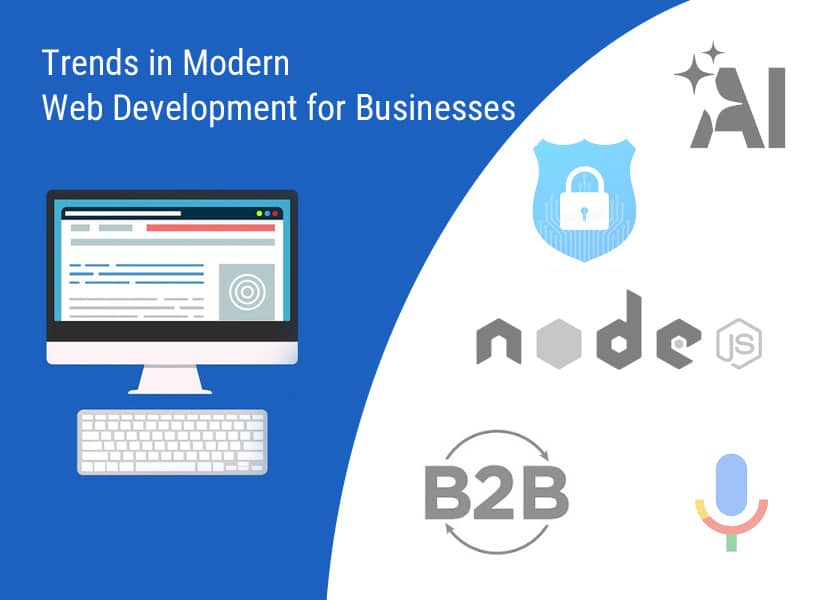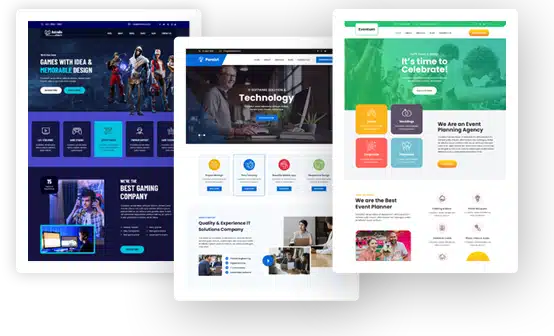Trends in Modern Web Development for Businesses in 2025

A major investment in digital infrastructure and Vision 2030 are driving the Kingdom of Saudi Arabia’s rapid transformation into a regional IT hub. Businesses are more compelled than ever to modernise their online presence in order to remain competitive as the shift picks up speed.
In the overwhelming majority of cases, this will mean joining forces with a high-end web development service provider in Saudi Arabia that’s attuned to local market activity and international digital trends.
Saudi companies in 2025 will have to change based on developing user trends, developing technologies, and policy changes in the digital world if they are to prosper.
This blog post talks about the most popular web development trends that are redefining the face of Saudi Arabia’s e-business landscape in 2025.
Key Web Development Trends for Saudi Arabia’s Modern Customers
1. Progressive Web Apps (PWAs) Go Mainstream
Progressive Web Apps offer a convergence experience—application performance and user experience with website discoverability. In Saudi Arabia, where mobile is the most widespread online activity medium, PWAs are an affordable answer to user experience enhancement without the cost of developing and maintaining both iOS and Android apps.
For example, Dammam and Jeddah food and grocery ordering firms are increasingly leveraging PWAs to enhance engagement, minimise bounce rate, and provide offline support. By the year 2025, customer platforms will become the standard of PWAs.
2. Personalisation with AI
Artificial Intelligence is transforming the manner in which websites engage with humans. From taste-based content suggestions based on users to predictive search and chat support, AI enhances user experience and stickiness.
Saudi e-commerce merchants, particularly those marketing to millennials and Gen Z, are utilising AI to maximise user experience in real time. AI-driven web interfaces make users able to search for products more efficiently, ultimately improving conversion rates. The trend is very important for those merchants who are concerned with personalising user experiences by cultural beliefs and language preferences. Connecting with a web development company can be beneficial for implementing AI and personalisation in a better manner.
3. Voice Search Optimisation
With increasing numbers of Arabic-speaking smart devices and voice assistants, voice search permeates the entire Kingdom. Businesses in 2025 must voice query optimize their web presence—particularly for mobile consumers.
Content organised as conversational Arabic keyword optimisation is crucial. From Mecca hotel bookings to Riyadh restaurant suggestions, voice search is turning into the most-used navigation format among Saudi technology enthusiasts.
4. Headless CMS and Decoupled Architecture
Legacy CMS are static and inflexible. With headless CMS solutions, the content layer is decoupled from the presentation layer, and the developer can deliver the content through any front-end channel—via sites and apps to kiosks and augmented reality (AR) devices.
Saudi businesses are increasingly embracing headless CMS platforms due to their scalability, security, and omnichannel nature in fulfilling regional banks and financial institutions’ digital-first expectations, healthcare networks, and government websites.
5. Local Hosting and Data Residency Compliance
Data sovereignty is the most important problem in Saudi Arabia. Due to the implementation of the Personal Data Protection Law (PDPL), companies are required to have local storage of data and conformity with local cybersecurity legislation.
The web development in Saudi Arabia focused on the local experts and data centres. Web development services in the nation today encompass cloud infrastructure that is compliant with local regulations, and customers are thus exposed to compliant and secure solutions as per local laws.
6. Green and Sustainable Web Development
Environmental sustainability is becoming more popular in the Gulf. Web developers now begin adopting energy-saving web design with less use of server resources and quick loading times, thus reducing carbon footprints.
Corporations demonstrate their loyalty to ESG (Environmental, Social, and Governance) by investing in low-footprint web development until 2025. Compatibility with dark mode, image compression, and code optimisation are becoming best practice standards.
7. Arabic-First Design and Localisation
Cultural adaptation is still an important aspect of Saudi Arabian e-success. Increasing numbers of companies are eschewing superficial Arabic translation and using Arabic-first design, which can support right-to-left (RTL) languages, local colloquials, and Islamic values.
The use of calligraphy, classic motifs, and culturally linked imagery is also making a brand more acceptable and customers more trusting. Trend is extremely universal in educational tourism, public sector tourism, and religious tourism markets.
8. Cybersecurity and Data Protection Integration
Cyber attacks merely become more advanced, and cybersecurity is now integrated into web development. Saudi companies in 2025 are constructing security from scratch, beginning even at the development phase.
SSL encryption, secure API connections, multi-factor authentication, and repeated vulnerability scans are strictly necessary. With the increase in cyberattacks in the GCC nations, companies are looking towards Saudi Arabia’s web development backed by threat anticipation and protecting customer data.
9. Web Accessibility and Inclusivity
Because the Saudi government encourages inclusive growth in every sector of business, web accessibility is both an ethical and a legislative requirement. Sites are required to be accessible to individuals with visual, auditory, cognitive, or motor impairments.
Sites today are constructed according to WCAG (Web Content Accessibility Guidelines) guidelines. The implication here is screen reader support, keyboard navigability, and colour contrast adherence. Inclusive companies enjoy more visibility from the public and a better brand image.
10. Integration of Saudi Digital Identity Platforms
Platforms such as Absher, Tawakkalna, and the Saudi National Digital Identity framework are hastening user authentication workflows. Interoperability with services enables platforms to provide quicker, secure login operations and address national identity authentication requirements.
Integration for fintech apps, government portals, and online buying portals through APIs enables smooth transactions and ensures trust. National digital services- matching APIs need to be implemented by web developers.
11. WebSockets Feature with Real-Time
Saudi companies are employing WebSockets and other technologies to provide real-time messages to customers in stock trading on finance websites, as well as following shipments in real-time. The practice is on the increase, particularly on fintech and logistics websites where latency is not an option.
It is the minimum requirement that 2025 real-time data exchange is not an extravagance but a requirement, and web applications have to exchange second-to-second dynamic data without page reload.
12. B2B Portal Development and ERP Integration
Saudi big business and manufacturing enterprises are making significant investments in B2B web portals with real-time linkage to ERP (Enterprise Resource Planning). These portals provide real-time visibility to partners and customers of inventories, invoices, reports, and service histories.
B2B developers must provide secure, high-performance, and scalable solutions with direct integration with applications such as SAP, Oracle, or Microsoft Dynamics—most likely through middleware and custom APIs.
13. Cross-Platform UI Frameworks
Successful development led to cross-platform UI frameworks including Flutter, React Native, and Xamarin. Saudi developers of 2025 aimed at using these technologies not just for mobile application development but for responsive web design as well.
Businesses are provided with one codebase running on web, Android, and iOS platforms with the identical branding and a lower time-to-market.
14. Augmented Reality (AR) in Retail and Real Estate
Augmented Reality is heading mainstream in Saudi retail businesses and property firms, enabling shoppers to try products and apartments virtually as if they were present in their own environment. From trying on virtual clothes to living in an apartment in 3D, AR-driven experiences are transforming digital engagement.
Web development these days encompasses WebXR and AR.js implementations to enable in-browser AR experiences, not any longer one-and-done applications.
Conclusion
As Saudi Arabia accelerates digitalisation, web development is at the forefront of bringing businesses and consumers closer together. From AI personalisation and PWA adoption to regulation and accessibility design, 2025 presents an ecosystem rich in innovation and promise.
Saudi businesses need to invest in new, scalable, and culture-based web solutions in order to keep pace with the competition. Embracing these trends today will make tomorrow’s digital world more connected, secure, and future-proof.
Azhar Shaikh Author
Azhar, the Strategy & Consulting Manager at Bytes Technolab Saudi Arabia, specializes in digital transformation and product engineering. With over a decade of consulting experience, he has guided 200+ clients across the EMEA region, helping them modernize systems, boost efficiency, and achieve significant revenue growth. His expertise in AI and innovative solutions empowers businesses to stay competitive and drive sustainable success.

